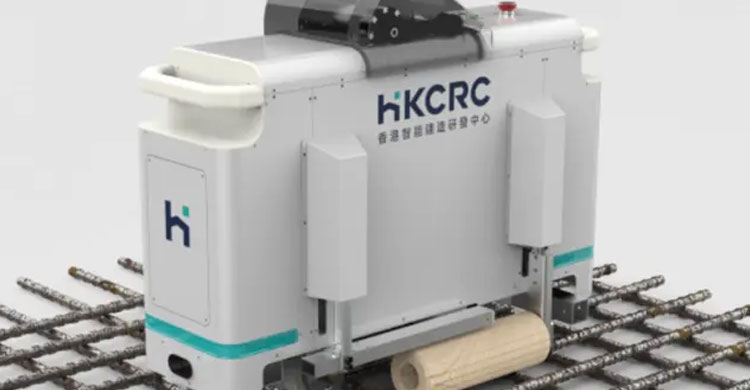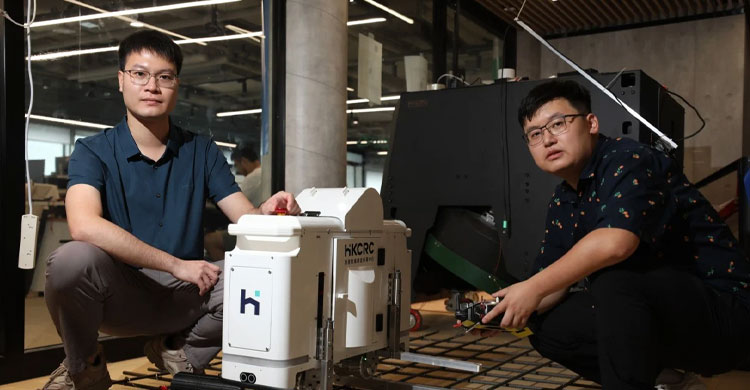Researchers at Hong Kong University of Science and Technology (HKUST) have developed a robot that can take over a back-breaking job at construction sites.
The rebar tying robot has been developed by the team led by MPhil student Li Haozhen under the guidance of Dr. Liang Haobo, Associate Director of the University’s Hong Kong Center for Construction Robotics (HKCRC). The robot is capable of swiftly moving along the reinforcement rods and automatically tying them together at the intersection. The team is planning to launch the robot in the market by the end of this year.
Earlier in April 2024, the innovation had won a Gold Medal with Congratulations of the Jury winners at the 49th International Exhibition of Inventions Geneva. An earlier press release from the HKUST states that the robot is the result of collaboration between HKUST researchers and the construction industry in the Greater Bay Area (GBA). It is aimed at increasing the efficiency of construction work with automation, the release states.
“The construction industry has been mostly adopting traditional construction methods over its centuries-long history, prompting me to think of new ways to realize smart construction,” said Haozhen.
The release also mentions that the new robotic innovation can outdo any human at the rebar tying job. The fully automated robot can complete one task in just five seconds, while any human worker would have three to four times more time for carrying out the job. However, the release mentions that the robot is not aimed at taking away construction jobs but to help them boost their performance. “It will also relieve them from their physically demanding work, which will help enhance work safety,” Haozhen said.

The team has tested the robot at construction sites in both Hong Kong and Shenzhen. Rebar is used to make concrete stronger, and when wet concrete is being poured the bars need to be tied together with wire so that they retain their intended position.
According to a report, the working population in Hong Kong declined by almost six percent between 2018 and 2022. This also resulted in a drop of 160,000 low-skilled workers in the country. Moreover, this type of working population decline is also being faced by several other countries across the globe. With a smaller number of individuals taking up manual jobs there will be an urgent need to introduce automation in various fields in the days ahead.
Keeping these factors in mind, the HKUST researchers have added both manual and automatic mode in the robot. While operating in the manual mode, the rebar tying robot will function based on the commands it receives, however, once set to automatic it can move between bars without any prompt. It also comes equipped with sensors to avoid it from falling down or hitting other objects, personnel during working.
The researchers plan to build more well-equipped robots in the future which can assist humans and take over the dangerous roles in tough manual jobs.












